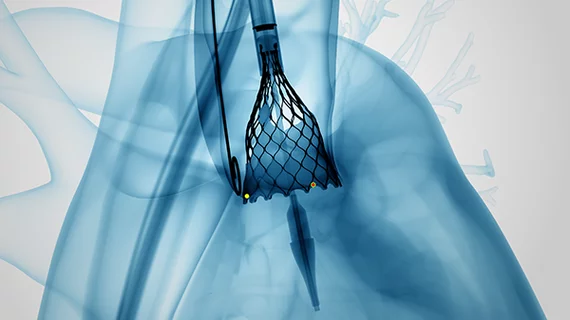Cusp overlap technique, optimized treatment strategy tied to significant improvements for TAVR patients
Transcatheter aortic valve replacement (TAVR) patients continue to benefit from an optimized pre- and post-procedural treatment strategy that utilizes the cusp overlap technique, according to new findings presented at EuroPCR 2022 in Paris.
The research represented an updated look at the Optimize PRO study, an ongoing analysis of patients treated with Medtronic’s self-expanding Evolut Pro and Pro+ TAVR systems. Medtronic shared initial findings from the study’s first 171 patients at SCAI 2021 last May. This update examines data from the study’s first 400 patients. All patients presented with severe, symptomatic aortic stenosis.
Researchers reported that the cusp overlap technique has improved operator control, leading to a permanent pacemaker implantation rate of 9.2%, a 30-day mortality rate of 0.8%, a median length of stay of just one day and no instances of moderate or severe paravalvular leak. When “all steps” of the cusp overlap technique were followed, the team added, it led to the most control and fewest permanent pacemaker implantations.
“The results demonstrate significant improvement for TAVR with the Evolut valve, some of the best results in an Evolut trial we have ever seen,” co-principal investigator Kendra Grubb, MD, surgical director of the Structural Heart and Valve Center at Emory University in Atlanta, said in a statement. “Adopting the cusp overlap technique and clinical pathways resulted in single-digit pacemaker rates out to 30 days, next-day discharge in the majority of the patients, and remarkably low rates of paravalvular leak.”
“We are committed to improving the TAVR care pathway with simple and repeatable techniques that implanting centers can use to help improve procedure efficiencies and success,” added Neil Yanke, vice president and general manager of Medtronic’s structural heart business.
Related TAVR Content:
New data on cardiac damage before and after AVR suggests earlier treatment may be beneficial
TAVR safe and effective for patients with mixed aortic valve disease
CT-FFR before TAVR improves detection of coronary artery disease, limits invasive imaging exams
TAVR outcomes unaffected when women require a smaller valve prosthesis

